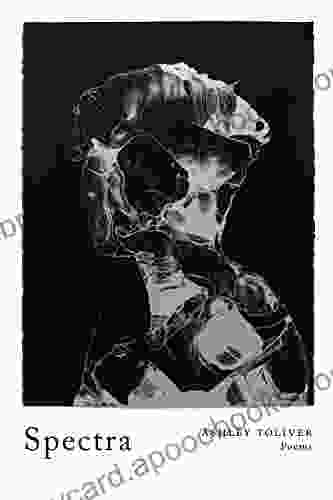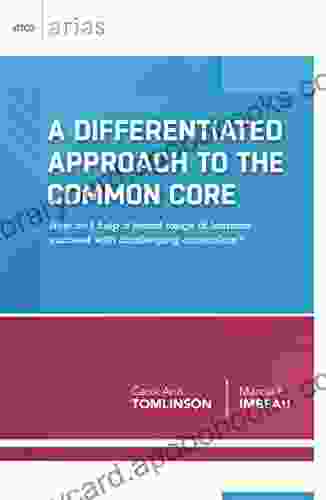Mastering Differential Equations: A Comprehensive Guide for Mechanical and Electrical Engineering

to Differential Equations:
Differential equations are a fundamental mathematical tool that form the backbone of many engineering disciplines, including mechanical and electrical engineering. They provide a means to model complex physical phenomena, analyze dynamic systems, and solve a wide range of real-world problems. Understanding differential equations is essential for engineers who wish to excel in their field.
4.6 out of 5
| Language | : | English |
| File size | : | 15827 KB |
| Screen Reader | : | Supported |
| Print length | : | 157 pages |
| Lending | : | Enabled |
Historical Perspective:
The study of differential equations dates back to the 17th century, with pioneers like Newton and Leibniz laying the groundwork for this field. Over the centuries, differential equations have become increasingly important in various scientific and engineering disciplines. In the 20th century, the development of numerical methods and computer simulations greatly expanded the applicability of differential equations.
Applications in Mechanical Engineering:
Differential equations play a crucial role in mechanical engineering. Here are some of their key applications:
- Vibration Analysis: Differential equations are used to model the oscillatory behavior of structures, machines, and vehicles. By solving these equations, engineers can predict resonance frequencies, damping ratios, and other important dynamic characteristics.
- Fluid Dynamics: Differential equations govern the flow of fluids in pipes, channels, and other systems. Engineers use them to analyze pressure drops, velocity profiles, and heat transfer phenomena.
- Heat Transfer: Differential equations are essential for modeling heat conduction, convection, and radiation. They help engineers design efficient cooling systems, heat exchangers, and thermal devices.
Applications in Electrical Engineering:
Differential equations are equally important in electrical engineering. They are used to analyze and design a wide range of electrical circuits and systems:
- Circuit Analysis: Differential equations govern the behavior of electrical circuits, including current, voltage, and power. Engineers use them to analyze circuit response, stability, and frequency response.
- Control Systems: Differential equations form the basis of control theory, which is used to design systems that regulate and maintain desired behavior. Engineers employ them to analyze feedback loops, stability, and system dynamics.
- Signal Processing: Differential equations are fundamental to signal processing techniques, including filtering, noise reduction, and image enhancement. Engineers use them to design filters, analyze signal characteristics, and process data.
Types of Differential Equations:
Differential equations can be classified into various types:
- Ordinary Differential Equations (ODEs): ODEs involve derivatives of a single independent variable. They can be linear or nonlinear and may have constant or variable coefficients.
- Partial Differential Equations (PDEs): PDEs involve derivatives of several independent variables and can model complex phenomena such as fluid flow, heat transfer, and wave propagation.
- Linear Differential Equations: Linear equations have coefficients that are constants or functions of the independent variable only. They are often easier to solve than nonlinear equations.
- Nonlinear Differential Equations: Nonlinear equations have coefficients that depend on the solution itself. They can exhibit complex behavior, including chaos and multiple solutions.
Solving Differential Equations:
Solving differential equations involves various techniques, ranging from analytical methods to numerical simulations:
- Analytical Methods: Analytical methods, such as separation of variables, Laplace transforms, and Fourier series, can be used to find exact solutions for certain types of differential equations.
- Numerical Methods: Numerical methods, such as the finite element method and finite difference method, provide approximate solutions for more complex differential equations.
:
Understanding differential equations is crucial for mechanical and electrical engineers. This comprehensive guide has provided a brief overview of the historical significance, applications, types, and solution methods of differential equations. By mastering this mathematical tool, engineers can gain a deeper understanding of complex physical phenomena and develop innovative solutions to real-world problems.
4.6 out of 5
| Language | : | English |
| File size | : | 15827 KB |
| Screen Reader | : | Supported |
| Print length | : | 157 pages |
| Lending | : | Enabled |
Do you want to contribute by writing guest posts on this blog?
Please contact us and send us a resume of previous articles that you have written.
 Book
Book Novel
Novel Page
Page Chapter
Chapter Text
Text Story
Story Genre
Genre Reader
Reader Library
Library Paperback
Paperback E-book
E-book Magazine
Magazine Newspaper
Newspaper Paragraph
Paragraph Sentence
Sentence Bookmark
Bookmark Shelf
Shelf Glossary
Glossary Bibliography
Bibliography Foreword
Foreword Preface
Preface Synopsis
Synopsis Annotation
Annotation Footnote
Footnote Manuscript
Manuscript Scroll
Scroll Codex
Codex Tome
Tome Bestseller
Bestseller Classics
Classics Library card
Library card Narrative
Narrative Biography
Biography Autobiography
Autobiography Memoir
Memoir Reference
Reference Encyclopedia
Encyclopedia David H Jonassen
David H Jonassen Amy Marshall
Amy Marshall Bonafide Rojas
Bonafide Rojas Amal El Mohtar
Amal El Mohtar Mike Monson
Mike Monson James Umber
James Umber Lett S Go Travel
Lett S Go Travel Amy Cross
Amy Cross Constance Mckinley
Constance Mckinley Turtle Bunbury
Turtle Bunbury Lana Otoya
Lana Otoya Tamia Thompson
Tamia Thompson Amy Lant Wenger
Amy Lant Wenger Laurel Blount
Laurel Blount Daniel J Brahier
Daniel J Brahier Annette Kuhn
Annette Kuhn Ana Paula Rimoli
Ana Paula Rimoli Laurent Tailhade
Laurent Tailhade Leslie Woollard
Leslie Woollard Nicholas Sansbury Smith
Nicholas Sansbury Smith
Light bulbAdvertise smarter! Our strategic ad space ensures maximum exposure. Reserve your spot today!

 Jaime MitchellUnleash Your Inner Calm: A Journey to Relaxation and Hypnotic Fantasy Through...
Jaime MitchellUnleash Your Inner Calm: A Journey to Relaxation and Hypnotic Fantasy Through... Thomas PowellFollow ·7.4k
Thomas PowellFollow ·7.4k Adrien BlairFollow ·5.5k
Adrien BlairFollow ·5.5k Jake CarterFollow ·5k
Jake CarterFollow ·5k Earl WilliamsFollow ·8.4k
Earl WilliamsFollow ·8.4k Gage HayesFollow ·7.1k
Gage HayesFollow ·7.1k Walt WhitmanFollow ·12.9k
Walt WhitmanFollow ·12.9k Charles ReedFollow ·18.9k
Charles ReedFollow ·18.9k Asher BellFollow ·5.5k
Asher BellFollow ·5.5k

 Roald Dahl
Roald DahlImmerse Yourself in a Mesmerizing Tapestry of Creativity:...
Prepare to be captivated by "Spectra," an...

 Clarence Brooks
Clarence BrooksUnleash Your Inner Taylor with Red Piano Vocal Guitar:...
Embrace the Red Era...

 Jeffrey Hayes
Jeffrey HayesUnlock Your Child's Academic Potential: A Comprehensive...
In today's rapidly changing...

 William Golding
William GoldingBrave Elizabeth: A Captivating Tale of Resilience and...
Immerse Yourself in a Riveting Historical...

 Curtis Stewart
Curtis StewartUnveiling the Heartfelt Melodies of Taylor Swift: A...
Step into the enchanting world of Taylor...
4.6 out of 5
| Language | : | English |
| File size | : | 15827 KB |
| Screen Reader | : | Supported |
| Print length | : | 157 pages |
| Lending | : | Enabled |












